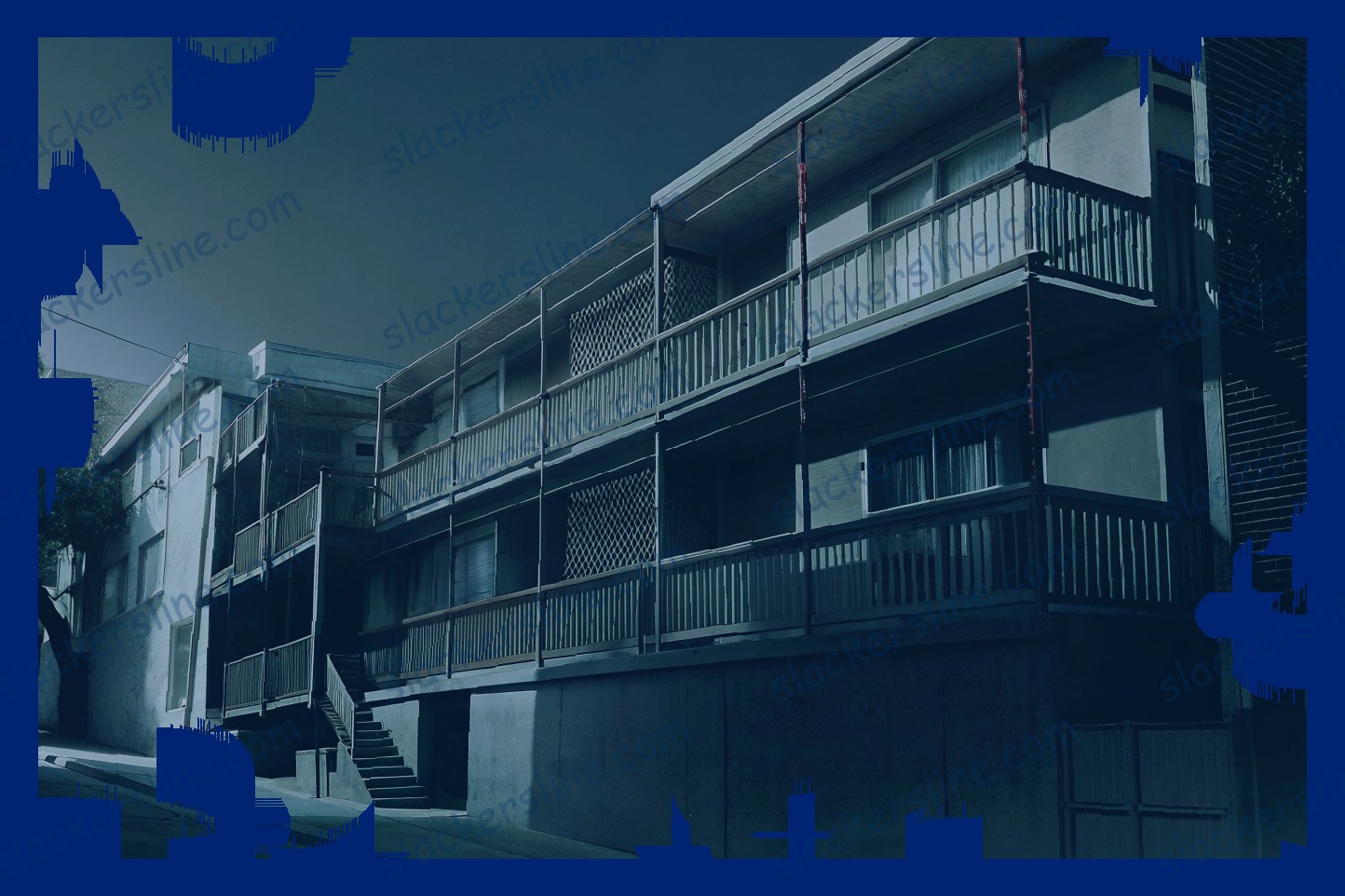What is Balcony Law
In California, balcony law refers to the legal obligations imposed on property owners and managers to maintain the structural integrity and safety of balconies and decks. The primary objective of these regulations is to prevent injuries and fatalities resulting from structural collapses. As was the case in the terrible collapse of a Berkeley balcony in June 2015, which resulted in the deaths of six Irish students , balcony law seeks to ensure the structural soundness of these often-overlooked structures. The law in this area imposes strict obligations on the owners and managers of buildings to inspect and repair balconies on a regular basis. Building owners are required to comply with set structural standards, and they are encouraged to conduct inspections a few months prior to the start of the rainy season in order to ensure that their balconies and decks are in good condition and are built to code. In order to comply with the law in this area, building owners are required to conduct visual inspections and have construction professionals on hand who can conduct detailed inspections.

Background and History
For decades, structural failures of balconies have been a recurrent problem in California. As far back as 1989, there was a particularly notable accident in San Francisco’s Union Square involving the Hyatt Hotel’s Sonora Room in which 16 guests were injured and two people died when the concrete balcony broke free from the building’s facade. That particular incident prompted state legislation mandating that cities and counties conduct invasive testing for high corrosion of the item, spall, by exposing the reinforcing steel through remaining concrete to the atmosphere.
The situation deteriorated during the economic downturn in the early part of the 21st century, just as many properties were being developed and/or improved after the 1989 Code changes. During that time, the engineering community began to recognize that the Code changes had not been adequately addressed. Many new engineering materials and systems began to emerge in the marketplace but were not being deployed in an engineer-approved manner in California. Problems became increasingly apparent with the absence of inspection and testing of critical concrete and waterproofing materials.
A series of balcony and deck failures across the state led to the formation of the Balcony Task Force in late 2014. Its purpose was to examine balcony, deck, and other exterior elevated elements (also known as E4) construction across California. The Building Standards Commission (BSC) received a request to amend the Title 24 California Building Code (CBC) for the next code adoption cycle, and allocate adequate time and resources to research and address the recognized concerns in inspection and testing of E4 construction. In 2016, the BSC issued various rulemaking reports, and directed staff to revise the CBC as well as other regulations.
Most recently, the 2019 CBC has been amended to incorporate some of the recommendations made by the BSC and the Balcony Task Force. To date, the general site and system inspections of E4 construction have all but been eliminated, forcing the "field engineer" and "out of the ground" inspections to be done by the project architect and civil engineer. Further, E4 systems must now meet new and more restrictive criteria.
The BSC is also working on amendments to the California Energy Code (CEC) for the 2019 edition aimed at increasing energy efficiency in the realm of residential buildings in California.
Key Elements in Balcony Law
The California Balcony Law stipulates the requirement for inspections and maintenance of exterior elevated elements, commonly known as "balconies." The law was made effective on January 1, 2017, and specifically addresses the inspection and maintenance responsibilities for balconies in multi-unit dwellings.
The key provisions of the California Balcony Law are:
- Code Section 5551 requires that an inspection be conducted by August 30, 2019, of every exterior elevated element that is supported by wood and that extends more than six feet beyond the exterior wall of the building. This law applies to all buildings with these types of elements, including condominiums, apartment buildings, office buildings, motels, hotels, resorts, and any other structures.
- The inspection is to be performed by a licensed architect or civil or structural engineer. Unfortunately, since most engineers are agents of one of the parties, their conclusions tend to be slanted. The best approach is to obtain three fire insurance reports to confirm that the elevation chapels are bondable. Any nonbondable issues should be in writing to determine the reason for the inability to bond the issue. If any of the deficiencies is controllable by maintenance, most fire insurance directors will take that position, provide they have that history in writing from the engineer who made that determination.
- If the inspection reveals that there are any unsafe conditions that need repair, the owner must complete the repairs within 120 days of their completion of the inspection report, or by December 31, 2019, whichever is earlier. If the deficiencies are classified as imminent hazards, the owner is required to proceed with the timely repair of the imminent hazards at once.
- Following the initial 2019 inspection and repair work, the owner is required to complete detailed inspections of all balconies every two (2) years.
- The law does not require that the inspections and repairs be disclosed to tenants. That said, most knowledgeable owners will send out notices as to repair dates, and all owners should disclose this to their underwriters.
On April 10, 2017, the California Department of General Services issued an advisory on compliance made by December 31, 2019. As a result of the 2015 Berkeley balcony collapse, the California Senate passed the California Balcony Law and became California Senate Bill 465. Assembly Bill 804 was added in 2016 to include multiple-story wood-frame buildings.
The new laws stated that all owners of commercial and residential buildings with balconies were legally required to perform inspections of them by a licensed contractor, a civil engineer or a licensed architect. In addition, within 120 days after the inspections and depending upon the findings of the inspection, owners were required to make the necessary repairs and report the findings to the California Department of Justice.
Balcony Inspection Regulations
The law requires inspection of certain exterior elevated, flexible floor elevation surfaces and their supporting structural members in many multi-unit residential buildings. Local jurisdictions, however, have jurisdiction over the number of stories, occupancy, height, or construction type that trigger the inspection requirement. The inspection requirements apply to exterior elevated walkways and balconies (except those with non-wood structural members) that are lined with a walking surface, such as decks or floor-level walkways. The inspections must be conducted by a licensed architect or engineer or a contractor with a state license in "d Class" specializing in waterproofing or general building. All residential buildings with three or more multifamily units are generally covered under the law, with several exceptions.
To get specific – as to who has jurisdiction – like previously mentioned, local building officers have jurisdiction over those requirements under the law to determine if there is "prolonged moisture intrusion because there is no physical break to separate the exterior from the interior," having to do with any walkway or balcony that can be lined and used for a walking surface. (Civil Code § 5551). This also includes railings. In other words, if the balcony or walkway has a physical separation from the home exterior, i.e., a railing, then it will not be affected by this law. Further, if the balcony or walkway is constructed of steel or fiberglass, then the requirements will not apply (these types of construction typically do not have a roof, awning, or other fixture over the top of the balcony or walkway and therefore have no potential issues with drainage problems). Exceptions also include stick built wooden walkways and balconies and condominiums with four or more multifamily units where the property was built prior to January 1, 2007 and the local building department has not yet adopted the ordinance or policy requiring balcony inspections.
Non-Compliance Penalties
The consequences of failing to comply with the numerous balcony law regulations in California can be severe. As discussed previously, compliance involves a thorough system of inspections and reporting that can be quite costly. Failure to comply can open a door for problems, both legally and financially.
In the event of a serious failure of a balcony on a multi-level apartment unit, it is quite possible that all of the residents affected by the failure will be entitled to recover for their injuries. Even in instances where the tenants are not legally entitled to recover from you , you may nonetheless be liable for the loss of life or injury to others resulting from a failure of a balcony on your property.
As is often the case, the extent of your liability will depend on your direct knowledge of any problems with the balcony prior to a collapse. If you did know of a problem and chose to conceal it or it was discovered during an inspection and not remedied as required you will be subject to face extreme liability.
Updates to Balcony Law
In the wake of Cal/OSHA’s findings that "almost all of the 13,000 balconies they inspected in California failed," the state legislature has passed amendments to existing law and added new code sections to the state’s Civil Code aimed at improving balcony law and the safety of balconies. California Civil Code sections 5982-5985 deal specifically with balconies, verandas, decks, porches, patios, and exterior stairways, with a focus on deck waterproofing, construction, inspection and maintenance.
Under California Civil Code section 606, all new wood deck materials are required to meet certain standards, specifically, being 100 percent heartwood of donor species, treated to a minimum retention level of 0.40 per copper per the AWPA U1 and U2 standard, and being construction of frame lumber that meets the AWPA UC3B standard. This deck requirement is reflected in the newer building codes (California Building Code 2314.2.4.2, 2328.11.1.6.3, 2431.2.5.5, etc.) and goes beyond the requirements of the 2010 National Building Code (section 2304.11.6.1) and 2011 California Green Building Code (section 4.503.2.4).
A major revision to the law requires that on any multi-family construction or rehabilitation project, the architect, civil engineer, or licensed structural engineer must design any portion of the building that has an exterior deck intended for use in connection with a unit within the building to include a waterproofing membrane. This requirement applies to exterior decks, porches, patios, balconies and balconies that project from the exterior of the structure in a manner whereby the underside is subject to water intrusion.
The structure to which the outdoor space is attached includes all items used to create the horizontal element and consists of structural concrete deck, steel structure, framing, exterior oriented strand board sheathing, veneer flashing and siding. This statutory change was the result of the 2015 balcony failure in Berkeley, in which water intrusion triggered the dry rot that ultimately led to a catastrophic failure of the deck and a tragic death of a UC Berkeley student. The revised law requires all new and replacement waterproofing membranes be of either "a torch down, self adhered, hot mopped, or fluid applied type." These types of waterproofing do not include "heat shrinkable sheets, butyl rubber type, fabricated from ethylene propylene diene monomer polymer, or liquid applied." If the waterproofing is exposed to the elements, the law requires it to be installed with either "rip strips"; "gravel"; or "cement plaster, a sand finish, or a liquid applied flashing."
Further, if any portion of a building exceeds 15 feet and is to be either constructed or rebuild as a covered deck or balcony, then each unit that is adjacent to or has a vertical plane that is within 10 feet of the deck or balcony must have a window, or door, that opens to fresh air. This requirement will prevent ventilation problems, and health issues related to mold, mold mitigation and mold litigation.
Any structure designed for "heavy timber construction or glue laminated timber laminated timber" as defined in California Code of Regulations Title 24, Part 2, Appendix TA1.7.2 must be maintained in accordance with National Wood in the Construction of Low-Rise Buildings. This information is not only important to structural engineers, architects and building owners and managers. It will also have an impact on engineers and architects who are responsible for designing the storm drain systems for properties that contain balconies, decks and walkways.
Tips for the Safety of Balconies
Under the law, tenants or property owners should always inspect their balconies before use, especially following severe weather. However, there are several practical ways to further safeguard your safety while using a balcony.
When using a balcony, always be mindful of its load-bearing limits and number of occupants allowed. The number of people on a balcony, combined with the weight of any items they carry with them—such as furniture and plant life—can accumulate and place undue stress on the structure over time. Check for load restrictions posted on the balcony, and never exceed any posted limit.
If an apartment complex chooses to provide balconies, they must take reasonable steps to ensure the safety of those balconies, including maintaining the structure and replacing defective or deteriorating materials. Property owners should be accustomed to performing scheduled maintenance and inspections of balconies to check for warping or splintering in the wood, cracks or chips in concrete and stone, loose screws or nails, or any other defects that could affect the performance or safety of a balcony. A property owner who fails to uphold this duty may be held liable for any damages that occur when their negligence causes an unsafe balcony to collapse.
Yet it is not always easy to recognize when an issue creates a safety concern. Tenants should familiarize themselves with the balconies of any apartments they occupy. When using a balcony, watch for indicators of a problem, such as discolored, loose or missing nails, rusted screws or bolts, loose or crushed railings, and splitting, cracking or local sagging of the structure. If you notice any of these issues, contact your property owner immediately.
If you have a balcony, make sure you understand how to properly care for it. You have the legal right to live in a safe dwelling, so don’t hesitate to bring any potential safety issues to the attention of your property owner once you notice them.
Help with Legal Resources
California property owners and tenants seeking legal advice on compliance with balcony laws can turn to several resources for support. The first point of contact is usually a local attorney who specializes in real estate law or landlord-tenant disputes. Such professionals are equipped to advise on the application of the regulations in specific scenarios, as well as representing clients during disputes regarding compliance.
Tenants with specific concerns such as structural issues or safety hazards should contact their landlord in writing, following up with a call to ensure their message was received. If the landlord fails to address the concern , tenants can reach out to local housing authorities or building departments for additional assistance.
An online resource center known as BUILT FOR THE BUCKET, created by CALBO and its partners, aims to improve compliance with the Balcony Standards. The resource center includes a compliance checklist, fact sheets, and links to helpful websites. This is a useful tool for both property owners and tenants that encompasses the entire scope of the Balcony Standards and includes updates and amendments.
These resources, in combination with the existing legal framework, ensure that quality legal support is available to those seeking to comply with balcony laws in California.

